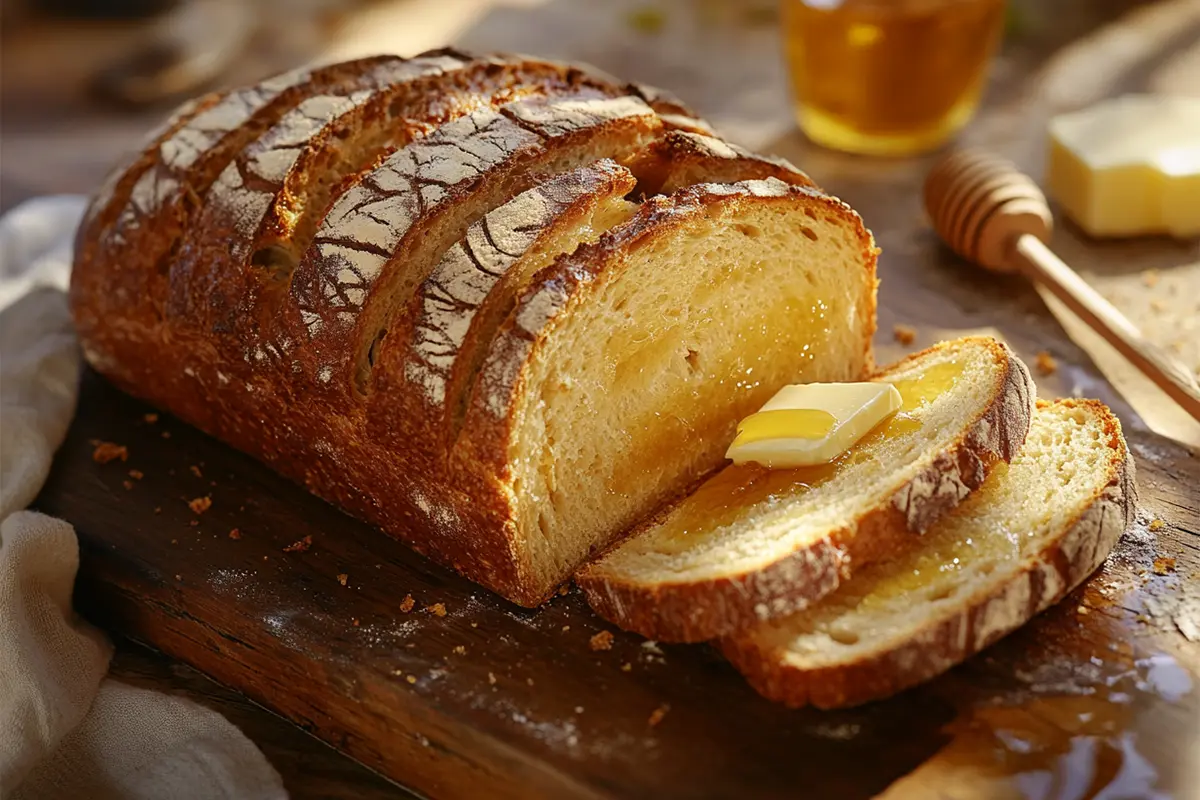Sourdough bread is celebrated for its complex flavor, chewy texture, and distinctive tang. But what exactly makes sourdough so unique? The secret lies in a combination of factors, including the quality of the starter, the fermentation process, and the techniques used by bakers. In this article, we’ll delve into the science and art of sourdough baking, revealing the secrets that lead to the perfect loaf.
Introduction to Sourdough
Sourdough bread is one of the oldest forms of leavened bread, with a history that dates back thousands of years. Unlike bread made with commercial yeast, sourdough relies on a natural fermentation process involving wild yeast and lactic acid bacteria. These microorganisms not only leaven the bread but also contribute to its characteristic flavor.
Sourdough is more than just a bread; it’s a craft that requires patience, skill, and a deep understanding of the fermentation process. To master sourdough, one must appreciate the delicate balance between time, temperature, and the microorganisms that bring the dough to life. Learn more about the history and science of sourdough bread.
The Science of Sourdough: Fermentation
Natural Fermentation
At the heart of sourdough’s unique flavor is the process of natural fermentation. This involves a symbiotic relationship between wild yeast and lactic acid bacteria. These microorganisms are naturally present in flour and the environment, and they work together to transform a simple mixture of flour and water into a complex, flavorful dough.
- Wild Yeast: Unlike commercial yeast, wild yeast is unpredictable and ferments the dough more slowly. This slow fermentation allows the dough to develop more complex flavors and a better texture.
- Lactic Acid Bacteria: These bacteria are responsible for producing the acids that give sourdough its tangy flavor. The two main types of acids produced are lactic acid, which is mild, and acetic acid, which is stronger and more vinegary.
The balance between these acids is what gives sourdough its distinct flavor. Understand how lactic acid bacteria contribute to sourdough’s tangy flavor.
Impact of Fermentation Time and Temperature
Fermentation time and temperature are crucial in determining the flavor and texture of sourdough bread. The length of fermentation affects how much acid is produced, which in turn influences the sourness of the bread.
- Warm Fermentation (25-30°C): Promotes the production of lactic acid, resulting in a milder sour flavor.
- Cool Fermentation (15-20°C): Favors the production of acetic acid, leading to a more pronounced sourness.
By adjusting the fermentation conditions, bakers can control the final flavor of their sourdough, making it as mild or as tangy as they desire.
The Importance of a Healthy Starter

What is a Sourdough Starter?
A sourdough starter is a live culture of flour and water that is used to leaven bread. The starter is full of wild yeast and bacteria, which ferment the dough and give sourdough its unique flavor and texture. A healthy starter is crucial for making good sourdough bread.
How to Maintain a Sourdough Starter
Maintaining a sourdough starter requires regular feedings with flour and water. This keeps the yeast and bacteria active and healthy. Here are some tips for maintaining your starter:
- Feeding Schedule: Feed your starter regularly to keep it active. Most bakers feed their starter once a day, but this can vary depending on the temperature and how often you bake.
- Hydration Levels: The hydration level of your starter affects its activity and flavor. A higher hydration starter will produce a milder flavor, while a stiffer starter will result in a more pronounced sourness.
- Flour Type: The type of flour you use to feed your starter can also affect its flavor. Whole grain flours, such as rye or whole wheat, contain more nutrients that feed the bacteria, leading to a stronger sour flavor.
By keeping your starter healthy, you ensure that your sourdough bread will have the best possible flavor and texture. For creative uses of your sourdough starter, check out this Sourdough Pop Tart Recipe.
The Role of Acids in Sourdough Flavor
Lactic Acid vs. Acetic Acid
The two primary acids produced during sourdough fermentation are lactic acid and acetic acid. Lactic acid is produced more abundantly at warmer temperatures and higher hydration levels, while acetic acid is favored by cooler temperatures and lower hydration.
- Lactic Acid: Contributes to a mild, creamy tang, similar to yogurt.
- Acetic Acid: Provides a sharper, more vinegary sourness.
The balance between these acids determines the overall flavor of the bread. Bakers can manipulate this balance by adjusting fermentation conditions. For more details on how to control the sourness in your bread, refer to this guide on Sourdough Bread Sourness.
Techniques to Enhance Sourdough Flavor
There are several techniques that bakers can use to enhance the flavor of their sourdough:
- Cold Fermentation: Refrigerating the dough during fermentation slows down the yeast activity but allows the bacteria to continue producing acids, resulting in a bread with a deeper, more complex flavor.
- Extended Fermentation: Allowing the dough to ferment for a longer period increases the acidity and intensifies the sourness.
- Using Whole Grains: Whole grain flours, such as rye, add nutrients to the dough that feed the bacteria and enhance the tangy flavor.
By experimenting with these techniques, bakers can create sourdough with a flavor profile that suits their personal preferences.
Common Sourdough Mistakes and How to Avoid Them
Overproofing and Underproofing
One of the most common mistakes in sourdough baking is overproofing or underproofing the dough. Overproofed dough will be too airy and collapse, while underproofed dough will be dense and heavy.
- Signs of Overproofing: Dough that has risen too much and then collapses when baked.
- Signs of Underproofing: Dough that has not risen enough and has a dense texture.
To avoid these mistakes, keep an eye on your dough during the proofing stage and use the “poke test” to check its readiness.
Dough Hydration
The hydration level of your dough affects its texture and flavor. Higher hydration doughs are more challenging to work with but produce a more open crumb and a chewier texture.
- High Hydration: Results in a more open crumb and a chewier texture.
- Low Hydration: Produces a denser crumb with smaller air pockets.
Adjusting the hydration level allows you to control the texture of your bread.
Achieving the Perfect Crust and Crumb

Crust Development
The crust of sourdough bread should be golden brown and crispy. Achieving the perfect crust requires high heat and steam during the initial stages of baking.
- Steam: Helps to keep the crust soft during the early stages of baking, allowing the dough to expand fully. Once the steam is removed, the crust hardens and develops a beautiful color and texture.
- Scoring: Scoring the dough before baking allows it to expand without tearing, resulting in a more attractive loaf.
Crumb Structure
The crumb of sourdough bread refers to the texture of the interior. A well-developed crumb should be open and airy, with irregular holes.
- Open Crumb: Achieved by using high hydration dough and proper fermentation.
- Tight Crumb: Indicates that the dough was either underproofed or made with low hydration.
To achieve an open crumb, focus on proper fermentation, high hydration, and gentle handling of the dough.
Exploring Regional Variations of Sourdough
San Francisco Sourdough
San Francisco is famous for its sourdough bread, which has a distinctively tangy flavor. This flavor is due to the unique strains of lactic acid bacteria found in the San Francisco area.
Global Sourdough Traditions
Sourdough is baked in many cultures around the world, each with its unique techniques and flavors. For example, German sourdough is typically made with rye flour and has a denser texture and stronger flavor compared to American sourdoughs.
By exploring different regional variations, bakers can discover new techniques and flavors to incorporate into their own baking. To learn more about unique flavor profiles, you might find the discussion on What is the Secret Pop-Tart Flavor? insightful.
FAQs About Sourdough
What makes sourdough sour?
Sourdough’s sourness comes from the acids produced by lactic acid bacteria during fermentation. The balance between lactic acid, which is mild, and acetic acid, which is stronger, determines the level of sourness.
How can I make my sourdough more sour?
To increase the sourness of your sourdough, try extending the fermentation time, using a cooler fermentation temperature, or incorporating more whole grains into your dough. Additionally, using a mature, ripe starter can enhance the tangy flavor.
Does the type of flour affect sourdough’s flavor?
Yes, the type of flour used in sourdough can significantly impact its flavor. Whole grains, such as rye or whole wheat, contribute to a stronger sour flavor, while white flours tend to produce a milder taste.
Can I control the sourness of my sourdough?
Yes, bakers can control the sourness of their sourdough by adjusting various factors such as fermentation time, temperature, hydration levels, and the type of flour used. Experimenting with these elements allows bakers to create a bread that suits their taste preferences.

Conclusion: The Joy of Sourdough Baking
Sourdough baking is both an art and a science. By understanding the factors that contribute to sourdough’s unique flavor and texture, bakers can master the craft and produce bread that is not only delicious but also deeply satisfying to make. Whether you’re a beginner or an experienced baker, there’s always something new to learn and explore in the world of sourdough.

